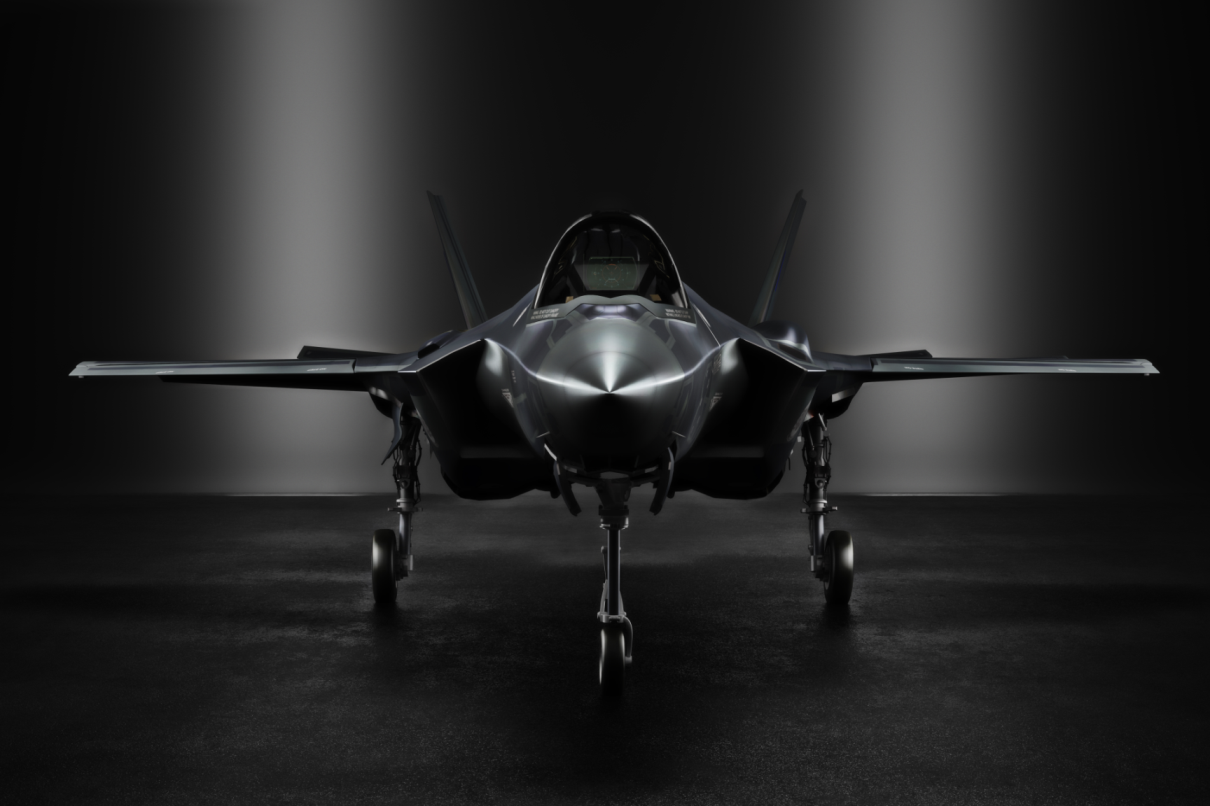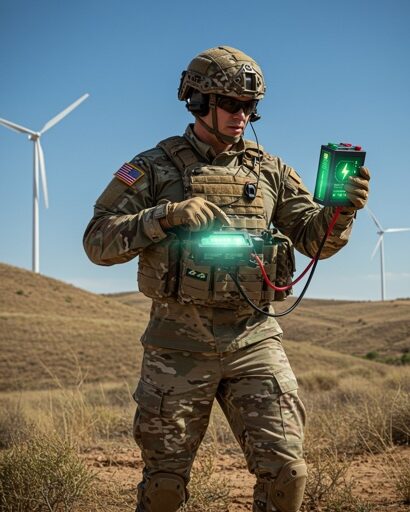Abstract: Since the Cold War, Nuclear-sharing has been central to the NATO alliance and is currently conceived upon the aerial assets of several member states. However, NATO’s reliance on the F-35A creates a dangerous situation in which nuclear sharing is upheld reflexively without consciously considering the operational problems associated with the nuclear mission. Thus, NATO must reconsider the delivery aspects of its shared nuclear strategy. The 5th generational claims of the F-35A have led to a Flanderisation of the fighter aircraft debate in military circles and societies at large.
Problem statement: How can the risk of a failing nuclear deterrence be assessed due to NATO allies’ reliance on the F-35 in the tactical nuclear strike role?
So what?: NATO Member States must reimagine nuclear deterrence even in the context of conventional operations. This integration must be understood as a chance to reinstall deterrence after a failure, thus avoiding a more far-reaching nuclear conflict.

Source: shutterstock.com/Digital Storm
The F-35A Lightening II and the Nuclear-Sharing Role
The F-35A is considered the only option to maintain serious involvement within NATO’s nuclear decision-making apparatus.[1] Ultimately, the F-35A’s ability to perform the assigned task within the nuclear-sharing role is accepted without any critical strategic assessment regarding its suitability. The acquisition decision by the German Airforce, for instance, did not concern itself with nuclear strategy or a real threat assessment. Instead, the acquisition process has turned the F-35A’ Lightening II’ into a cornerstone of NATO’s nuclear-sharing arrangement and prop to uphold the political commitment.[2] Nuclear strategic premises will be used to determine the validity of the purchase, considering current strategic developments resulting from the war in Ukraine. Thus, the debate regarding the F-35 needs to be taken to a more strategic level, discussing the prerequisites for an aircraft in this role. The F-35A’s acquisition for the nuclear role severely hampers the strategic understanding of the nuclear mission and its associated limitations, especially since additional methods to strengthen NATO’s nuclear deterrence setup are not discussed.
The acquisition decision by the German Airforce, for instance, did not concern itself with nuclear strategy or a real threat assessment.
5th Generation Definition
Fighter aircraft are often portrayed in terms of a generational model, with each subsequent generation claiming to be significantly more capable than the previous.[3] Despite the definitions, we are vitally short of quantifiable metrics to help define each generation—this includes the 5th Generation. The F-35 is sold as a 5th Generation aircraft; however, there is no definitory clarity on what defines the “5th Generation” and how it differs from its predecessors. Often, stealth is the key characteristic used to describe 5th Generation aircraft. Yet, in the F-35’s case, this framing as a pure 5th Generation aircraft is not based on empirical evidence. Thrust vectoring, for instance, is not part of the F-35s spectrum of abilities, unlike the F-22—yet it is considered a hallmark of 5th Generation aircraft. Thus, when comparing the F-35A with the F-22, one cannot establish a clear definitive basis for a 5th Generation aircraft.[4] Discussions about the 5th Generation aircraft do not concern themselves with any serious definition; consequently, serious scholars should consider the term void of any meaning.
As noted above, for many observers, stealth technology is the baseline for a 5th generation aircraft. The F-35A’s stealth capabilities have been severely Flanderised within the discourse. When discussing the F-35A’s tactical and operational abilities, it is essential to differentiate between the different stealth levels on offer. We must consider how and under what conditions the stealth aspect works. Current radar systems — including one from the German company, Hensoldt — have already successfully tracked an F-35A with passive radar.[5] New developments, especially by Chinese and Russian companies, question the longevity of stealth as a viable capability.[6] Critics in Australia have noted that stealth capability cannot be provided against all ground-to-air systems and that the angle of the aircraft facing radar systems matters. Consequently, the F-35A’s survival ability in a high-threat environment is questionable.[7] In contrast with other designs, such as the F-22, the stealth requirements for the F-35 were limited to providing low-observability against battlefield anti-aircraft weapon systems.[8]
Critics in Australia have noted that stealth capability cannot be provided against all ground-to-air systems and that the angle of the aircraft facing radar systems matters. Consequently, the F-35A’s survival ability in a high-threat environment is questionable.
Network-centric warfare is central to the F-35’s philosophy towards tomorrow’s air warfare, wherein the F-35 is conceived as a sensor base which can identify and track movements in its battlespace in real-time. At the same time, it can share this information with other shooters (naval combatant vessels, aircraft or ground-based assets) to maximise overall force interoperability. In essence, it is a keystone of the air component of the multi-domain approach, favoured by the US military and many armed forces within NATO. 5th Generation aircraft are argued as the only aircraft able to do this by current commentators and planners.[9] Yet Saab and Boeing, for instance, have offered their network-centric assets through the JAS-39E and the F/A-18 F Block III aircraft designs.
In contrast to the F-35, these aircraft are commonly defined as “4th Generation Plus”. Thus, the F-35A is conceived as a battle management system without real intention for close-up aerial combat. This makes the F-35A a somewhat questionable choice for the delivery of nuclear munitions.
“Jack of All Trades”
Within the next ten years, the family of F-35 variants will form the backbone of NATO’s tactical fighter fleet. Ultimately, the F-35 might face significant problems in a near-peer combat scenario since it can only hold four air-to-air missiles internally without jeopardising its stealth ability. It is said that this problem will be solved by providing the F-35s with access to other shooters (ships, ground-to-air missile systems or other aircraft).[10]
The central idea of the F-35 is its network-centric design, building on the premise of awareness and information at the cost of manoeuvrability and speed. This design concept is based on the supposed lessons drawn from air warfare in the post-Cold War period, such as Operation “Desert Storm” or later operations during the war in Kosovo. Furthermore, recent air operations in places such as Iraq and Afghanistan have showcased the importance of close air support for ground troops within a Counter-Insurgency operational environment. This requirement has overwritten operational needs, which would be essential in a near-peer conflict. Especially given the relative absence of enemy air defences in Afghanistan. Over the last 20 years, air operations have instilled the notion that air operations are seldomly seriously contested. The current war in Ukraine illustrates the need for a broad spectrum of capabilities to ensure an aircraft’s survivability.
Air Combat Maneuvering (ACM), commonly referred to as dogfighting, is seen as a matter of the past. While weapons can be carried in, the load is somewhat limited. This makes any air fight a rather delicate affair and relies entirely on the ability of the air-to-air missiles to achieve air superiority. A similar argument had been made in the early 1960s when the first F-4 Phantoms were introduced.[11] At this time, it was thought that missiles, not guns, would be the future of aerial warfighting. However, the ensuing air war over Vietnam highlighted the importance of ACM within close visual ranges. The superior manoeuvrability of Mig-21 and older Mig-17 fighter aircraft proved disastrous for US air forces and remained so until US forces increased their ACM training for new pilots.[12] Higher manoeuvrability and practical use of terrain and weather conditions turned the advantages of radars and long-range missiles into weaknesses of US fighter aircraft. Some commentators point to the progress in aerial weaponry since then.[13] The simplicity of this argument neglects the issue of advancements in electronic countermeasures deployed by potential enemy forces in the near future. ACM engagements during Operation Desert Storm and the aerial campaign in Kosovo further highlight the importance of performing these tasks despite reliance on long-range air-to-air missiles and information superiority.[14] Lastly, current US efforts to develop Artificial Intelligence capable of performing ACM point towards the assumption that ACM is far from being a matter of the past.[15]
The superior manoeuvrability of Mig-21 and older Mig-17 fighter aircraft proved disastrous for US air forces and remained so until US forces increased their ACM training for new pilots.
Furthermore, aerial engagements must always consider the geographical engagement area and its associated weather conditions. Mountainous terrain, for instance, can be used to hide or at least complicate the target acquisition by the F-35A’s sensor suit. F-35A’s are currently barred from operating close to thunderstorms, limiting their operational usage.[16] Thus, despite stealth claims, the F-35 will likely have to contend with non-stealth realities of warfighting, ultimately even within ACM.
Nuclear Strategic Implications
NATO’s nuclear-sharing practices give certain NATO Member States access to nuclear weapons in specific wartime scenarios. Contrary to current commentary or military analysis, the B-61 bomb’s primary purpose is to be used tactically on the battlefield rather than as a purely strategic weapon.[17] The decision only focused on replacing existing capabilities rather than any serious debate on nuclear considerations.[18] For the US doctrinal thinking, nuclear weapons are aimed to be used ‘within the range of military operations, to include deterrence, crisis response, strike, assessment, and return to stability‘.[19] While at the same time, ensuring secure communication with the opposite side at all times, even in times of greater escalation, is key to maintaining a feasible nuclear strategy.[20]
Nuclear warfighting, a terminology long absent from the vocabulary of Western armed forces, is at the centre of this school of thought on escalation control.[21] It is believed that the actual capacity to fight a nuclear war makes deterrence postures credible in the eyes of the opposing side.[22] A lack of credibility can lead to adventurism and unclear calculations in the eyes of a potential aggressor. After this, technical problems or insecurities in the delivery method may jeopardise one’s credibility within the calculations of the opposing side. NATO’s dual-track decision, for instance, followed the rationale to move NATO forces away from the weakness of airfield reliance on its nuclear forces.[23]
A lack of credibility can lead to adventurism and unclear calculations in the eyes of a potential aggressor.
NATO’s nuclear sharing arrangements are limited to the few Member States possessing Dual Capable Aircraft (DCA), which maintain the capability to deliver the B-61 nuclear bomb series. The F-35A addresses the requirements to ensure the nuclear-sharing arrangement persists.[24] While the importance of nuclear-sharing is often reiterated, the origin of the current setup is shrouded in mystery. Until 1994, NATO’s nuclear sharing arrangement consisted of Pershing 1a missiles with a range of 740kms, Lance short-ranged ballistic missiles (SRBM) and nuclear-armed artillery.[25] The unilateral presidential decision to withdraw tactical nuclear short-range weapons without a bilateral treaty with the Soviet Union and the hope that this decision would instil a similar Soviet behaviour was formed by the zeitgeist at the time. Thus, the premise of the current nuclear setup of the nuclear-sharing mission — the possession of DCA capability — is the lowest common denominator between the US and its allies.[26]
In the early 2000s, DCA nations actively sought to limit their role within nuclear sharing, first, by limiting the framework in which nuclear weapons are held at a low-readiness posture.[27] Even in the latest strategic review, NATO did not raise the level of operational readiness for its nuclear assets nor clarify its intended role.[28] Additionally, as Kamp observed: “US nuclear weapons were always deployed in Europe after the Cold War, but NATO had carefully avoided any discussion regarding their purpose – let alone development of a clear strategy.”[29] This starkly contrasts the understanding of signalling of NATO’s nuclear intent in the 1980s. During the 1980s, the aim was to ensure that ‘integration of nuclear weapons with conventional forces must be unmistakable to ally and foe alike‘.[30] Furthermore, this line of thought was reiterated in the Deterrence Operations Joint Operating Concept in 2006, which, together with JP 3-72 Nuclear Operations in 2019, form the backbone of US doctrinal nuclear thinking.[31]
In conclusion, the current US nuclear sharing arrangement posture certainly leaves questions regarding its validity,[32] especially since NATO does not consider nuclear weapons a less than the strategic option, despite the different views in the doctrinal planning within the US armed forces.[33] The current framing of tactical nuclear weapons as sub-strategic weapons, for instance, promotes the idea that using a B-61-12 has an immediate strategic significance despite the lack of concrete operational plans for their use by NATO or US European Command.[34] Accordingly, the place of nuclear weapons within NATO is not communicated.
The current framing of tactical nuclear weapons as sub-strategic weapons, for instance, promotes the idea that using a B-61-12 has an immediate strategic significance despite the lack of concrete operational plans for their use by NATO or US European Command.
Colin Gray observed in the 1980s that the primary goal of nuclear weapons in US doctrinal thinking was much the same as conventional military thinking, namely the destruction of the enemy’s military forces without articulating the intended effects.[35] Thus, the acquisition of the F-35A for the nuclear role raises questions regarding the strategic assessment prior to the purchase decision.
While statements reiterate that NATO is primarily a nuclear alliance, they do not fill the narrative with credibility regarding abilities, political will or a communication strategy.[36] Ultimately, NATO would have to rely on the Nuclear Forces of US Strategic Command to respond to any nuclear escalation, should the nuclear weapons in Europe be destroyed in a potential first strike or to remedy nuclear escalation. US Strategic Command would have limited options in responding at a lower yield level. Only the W76-2 warhead of a UGM-133 Trident II Submarine-launched ballistic missile (SLBM) would be an option underneath the strategic segment, however, while using a strategic delivery method.[37] Using an SLBM could be misinterpreted as proof for further escalation. An SLBM might be misinterpreted as a strategic weapon due to the weapons’ flight trajectory and the inability of the Russian Federation to distinguish its exact payload.[38] Thus, all nuclear options in defence of Europe would unnecessarily be strategic, and the threshold for use would be higher to avoid possible escalation to a nuclear war with US cities being targeted. Therefore, the question remains: what is needed to successfully implement a nuclear operational and tactical strike plan?
SNOWCAT and Mission Design
The only current exercise for DCA aircraft is Steadfast Noon. However, the exercise is separated from other conventional exercises. The interaction effects of the nuclear mission on other conventional missions have never been fully operationally tested. So far, a full SNOWCAT mission requires escort fighter aircraft, suppression of enemy air defences (SEAD) and electronic warfare (EW) aircraft, aerial refuelling, and early warning aircraft from all allied nations to function. Since the end of the Cold War, the number of combat aircraft has declined. Lockheed Martin claims fewer F-35As could fulfil more roles than legacy fighters. This claim, however, might not be upheld in a near-peer warfighting scenario due to the lack of numbers of the F-35A.
The nuclear mission can only be carried out by F-35A aircraft which have been modified and certified. Thus, only aircraft assigned to units tasked with the nuclear mission will have the necessary aircraft, ultimately reducing the available aircraft for this mission to about 100 in the NATO context.[39] This number initially seems to be sufficient if only considered for this role. However, many DCA strike craft would also likely be used in other roles. Ultimately leading to problems in mission availability and potential attrition through enemy fire.
Only aircraft assigned to units tasked with the nuclear mission will have the necessary aircraft, ultimately reducing the available aircraft for this mission to about 100 in the NATO context.
The F-35 is seen as a ‘game changer’ for the air delivery of US sub-strategic nuclear weapons due to its reliance on its stealth architecture. However, changing aerial threat environments, such as those currently observed in Ukraine, make it necessary to seek ways to avoid being detected by enemy anti-aircraft weapon systems.[40] NATO’s aircraft rely on the SNOWCAT method to reach any target. In a SNOWCAT mission, EW and SEAD will be used jointly in a strike package to overcome the enemy’s attempt to stop the F-35’s nuclear deterrent mission.
The F-35A will, for the foreseeable future, not act alone or without support from aircraft with more conventional designs, such as the Eurofighter Typhoon. Even if it is assumed that the stealth ability of the F-35A is upheld, it is still questionable if the enemy will not focus on supporting assets such as tanker aircraft or Airborne Warning and Control Systems (AWACS). The Russian Federation has identified the weakness of support assets in Western military campaigns.[41] The Russian fleet of long-range interceptors, such as the Mig-31BM (NATO: Foxhound-C) and Su-35S (NATO: Flanker), armed with Vympel R-37M, may prove to be lethal to Allied air operations, such as currently observed by the operational requirements for early evasive actions by the Ukrainian Airforce.[42] To counter these threats, the F-35A must acquire long-rage capabilities such as the METEOR Air-to-Air Missile, of which only two could be carried internally.[43]
Additionally, the aircraft for the SNOWCAT mission, especially the F-35A, would require airports with unique support infrastructure.[44] Airbases, however, are in the range of Russian ballistic and cruise missiles and lack any form of defensive armament in their current setup. This is a concern if an attack against these airbases would occur without prior warning. The Russian Federation still holds a massive advantage in short- and medium-range dual-use ballistic missiles.[45] It seems that military planners have returned to a time before Wohlstetter’s famous analysis of the survivability of US nuclear forces in case of a first strike. Lieber and Press note, for instance, point towards neglect of the concepts within nuclear weapon policies: “Of the two key strategies that countries have employed since the start of the nuclear age to keep their arsenals safe, hardened has been negated, and concealment is under great duress.”[46]
The Russian Federation still holds a massive advantage in short- and medium-range dual-use ballistic missiles.
The current nuclear sharing arrangement’s capabilities lack this durability due to their reliance on air-launched assets and the associated logistical needs in the form of high-tech airfields. Russia’s war against Ukraine has shown that airbases were primary first-strike targets. Thus, F-35A squadrons would need hardened facilities at multiple airbases to avoid being targeted by a first wave of tactical weapons. Operations from remote airfields cannot be envisioned with the F-35A if a runway is not adapted to the F-35A’s needs.[47] A concept to disperse the F-35A with a robust logistics package similar to the US approach would be needed to successfully implement such an operation requirement. The lack of maintenance personnel and logistical support could severely hamper this.[48]
SEAD and DEAD the Essence of SNOWCAT
The design of the F-35A itself, however, has severe limitations for its intended role. A fighter-bomber must be able to carry a greater payload in support of combat operations supporting its ground forces. While Lockheed Martin and the US Air Force insisted that the F-35A would only use internal weapons at the onset of a conflict to degrade enemy air defences, it is questionable if enemy air defences in a peer-state conflict scenario can be fully destroyed. During a deployment near the Kaliningrad Oblast, in support of NATO reassurance measures, F-35A successfully observed and tracked the activities of Russian Anti-Air (AA) assets with the help of other assets. Notably, specific air defence systems could not be identified by the F-35A right away since the systems were operating with different radar signatures, as they originally had in their database.
Consequently, the F-35A may still rely on intelligence assets like other aircraft to find air defence systems, especially under wartime conditions.[49] While surface-to-air missile systems were found in this example, the testbed has severe limitations. For one, this was not during a war scenario, and thus, means of deception or operating procedures of Russian air defence might vary after lessons learned from the war in Ukraine. Secondly, Dedicated SEAD (and DEAD (Destruction of Enemy Air Defenses) assets within NATO have severely declined qualitatively and quantitatively since the end of the Cold War.[50] Germany, in particular, has not renewed its aerial electronic warfare (AEW) and SEAD assets. It will most likely acquire a new dedicated platform only in the late 2030s based on the Eurofighter Typhoon.[51] Even the US Air Force does not have any specifically dedicated electronic attack variant for this purpose; only specialised squadrons operating the F-16CJ Block 50/2 in a “Wild Weasel” role (SEAD by using Anti-Radiation Missiles by dedicated aircraft to seek and destroy enemy radars of Anti-Aircraft Systems). The US Navy’s EA-18G “Growler” is thus unique in fulfilling this dedicated role. The F-35 is not optimised for SEAD missions in its earlier versions.[52] The F-35A is expected to be optimised for SEAD missions when the 3F – version is fully implemented.[53] The extent to which these modifications can be compared to a dedicated SEAD/ DEAD or electronic warfare aircraft like the EA-18G ‘Growler’ is seen as rather sceptical by many air forces. The Royal Australian Air Force maintains a mix of EA-18Gs in conjunction with their intended F-35A fleet.[54] Germany will also seek a dedicated SEAD and electronic warfare platform.[55] These developments raise questions about the actual capability of the F-35 in this field.
Germany, in particular, has not renewed its aerial electronic warfare (AEW) and SEAD assets. It will most likely acquire a new dedicated platform only in the late 2030s based on the Eurofighter Typhoon.
Current wargames, particularly by the US Air Force, regarding the use of F-35A within a contested air space scenario, have shown the aircraft’s severe limitations.[56] Instead of using the F-35A as the workhorse for future air combat, the wargames relied heavily on the future follow-on concept (Next Generation Air Dominance (NGAD) to penetrate contested air space. The wargame against the People’s Republic of China further already used the F-35A Block 4 with Refresh 3 enhancements in electronic warfare.[57] The role of the F-35A in this scenario was deployed as a point-defender and not as a fighter aimed at penetrating enemy air defence – a task which would be essential in a SNOWCAT scenario.
Range Issue
The range of the F-35A also questions its suitability for nuclear missions. Officially the maximum range is considered 2,200km, without refuelling, which would be possible if the aircraft does not manoeuvre and moves only in a straight line.[58] This premise, however, does not represent the aircraft’s actual combat range with returning to the home base or any other airbase. Thus, the number is then reduced to 1,094 km, a maximum range without extensive manoeuvring or loitering within the target area.[59] This number could only be taken as an indicator of a strike mission with no return. For the nuclear mission loitering is not intended but could be an issue, especially in the case of time-critical moving target sets. Avoiding enemy fighter aircraft has to be considered, especially if a direct route towards the target is not intended. The fuel is carried internally in this scenario, significantly since external fuel tanks would severely diminish the stealth ability of the F-35A. Thus, realistically F-35As without air refuelling would have a combat range of about 500-600 km, as ASPI shows.[60] These findings, applied to Europe, would leave only Kaliningrad or parts of Belarus as the only viable options for strikes for the F-35A. Though this criticism also applies to existing fighter aircraft tasked with this role. It becomes problematic even when adding the official range of the B61-12 nuclear weapon of about 80km, especially if aerial point defences against glide bombs are near the intended target set. Future developments, such as laser systems, might further lead to the degradation of this delivery method.
The range of the F-35A also questions its suitability for nuclear missions. Officially the maximum range is considered 2,200km, without refuelling, which would be possible if the aircraft does not manoeuvre and moves only in a straight line.
Currently, the idea for more aerial refuelling is limited by the capacity of tankers in NATO’s European arsenal. Thus, to make the F-35A operationally more viable in its intended role would require a significant increase in a survivable tanker fleet. The destruction of tankers would become a primary concern in any conflict with the Russian Federation.[61] The F-35As, acting without the necessary quantities of enablers, would find it difficult to execute its mission.
Conclusion
The decision to purchase the F-35A for all DCA nations will form the backbone of NATO’s nuclear sharing for 20-30 years. This will require the DCA nations to keep the aircraft operational in adequate numbers, thus achieving a credible sub-strategic force structure to fulfil NATO’s deterrence mission. The F-35A’s setup will form NATO’s understanding of air warfare and doctrine for the foreseeable future. Thinking about the future of a potential air war needs to influence the development of new aircraft. The hard truth that allied aircraft will be lost will degrade the alliance’s ability to fulfil all the tasks as envisioned needs to be considered. In a near-peer warfighting scenario, NATO’s air supremacy can no longer be taken for granted. The DCA’s nuclear mission must be credible, reliable, and secure. In the nuclear realm, a military capability only creates a credible deterrent posture if executed credibly in the opponent’s perception.
The DCA’s nuclear mission must be credible, reliable, and secure. In the nuclear realm, a military capability only creates a credible deterrent posture if executed credibly in the opponent’s perception.
Lastly, the F-35A must be seen with its flaws and not only its positive image. It has similar problems to many jetfighter designs of the 1990s. The increase in complexity leads to increased problems regarding logistics and sustainment, especially regarding its unique stealth abilities. These aspects have direct operational impacts. Overly complex systems might not have the necessary turnaround time in wartime and thus may pose operational constraints on the mission.
Ultimately, Rowen’s observation regarding the acquisition rings true today: ‘governments usually buy military capabilities with only a general idea about their future uses.'[62] An aspect which urgently needs to change.
Severin Pleyer is an Officer in the German Bundeswehr and a Research Fellow at German Institute for Defence and Strategic Studies. He has authored several works on the issues of nuclear strategy and is currently in the final phase of his PhD at the University of Turku, Finland. The views expressed in this article are the author’s alone and do not represent those of the Bundeswehr.
[1] Charles Glaser, Austin Long und Brian Radzinsky (Hg.), Managing U.S. Nuclear Operations in the 21st Century, (Washington, DC: Brookings Institution Press), 17.
[2] Bunn M. Elaine, “NATO Nuclear Operations,” In: Ashton B. Carter (Ed.), Managing nuclear operations, (Washington, DC: Brookings Institution), 208.
[3] Richard P. Hallion, “A Troubling Past: Air Force Fighter Acquisition since 1945,” Airpower Journal – Winter 1990, https://web.archive.org/web/20161211062747/http://www.airpower.au.af.mil/airchronicles/apj/apj90/win90/1win90.htm.
[4] Gerry Doyle, “Factbox: The F-35 – stealthy, numerous and expensive,” In: Reuters Media, April 10, 2019, last accessed May 15, 2023, https://www.reuters.com/article/us-japan-defence-f35-factbox-idUSKCN1RM2D0.
[5] Christoph Seidler, “Deutsche Techniker sollen US-Kampfjet enttarnt haben,“ DerSpiegel, https://www.spiegel.de/wissenschaft/technik/passives-radar-deutsche-technik-enttarnt-us-kampfjet-f-35-a-1289333.html.
[6] Tanim Baba, “China claims its next-gen radar detects all air threats, including stealth fighters,” Interesting Engineering April 16, 2023, https://interestingengineering.com/innovation/china-next-gen-radar-detects-all-air-threats
[7] “Parliamentary Joint Committee on Foreign Affairs, Defence and Trade,” February 07, 2012, Department of Defence Annual Report 2010-11, 9, https://parlinfo.aph.gov.au/parlInfo/search/summary/summary.w3p;query=Id%3A%22committees%2Fcommjnt%2Faef69d01-ae91-41f7-9aab-04d2781b21c8%2F0000%22#1.
[8] Ibid., 9-10.
[9] André Adamson, Snyder Matthew, The Challenges of Fifth-Generation Transformation, JAPCC, Journal Edition 26, https://www.japcc.org/articles/the-challenges-of-fifth-generation-transformation/.
[10] Sydney J. Freedberg Jr., “F-35 Spots Targets For Army Missile Defenders,” In: Breaking Defense, August 06, 2019, https://breakingdefense.com/2019/08/f-35-spots-targets-for-army-missile-defenders/.
[11] Stevan A. Fino, “All the Missiles Work”: Technological Dislocations and Military Innovation, Air University Press (“All the Missiles Work”), http://www.jstor.org/stable/resrep13955, 12.
[12] Robert G. Angevine, “Adapting to Disruption: Aerial Combat over North Vietnam”, National Defence University, JFQ 96, 1st Quarter 2020, https://ndupress.ndu.edu/Portals/68/Documents/jfq/jfq-96/JFQ-96_74-83_Angevine.pdf?ver=2020-02-07-150502-850
[13] Kris Osborn, “Warrior Maven – Center for Military Modernization (2023): Can The F-35 Dogfight? Does It Have to?,” In: Warrior Maven: Center for Military Modernization, April 28, 2023, https://warriormaven.com/air/can-the-f-35-dogfight.
[14] Stillion, John, Trends in Air-to-Air Combat: Implications for Future Air Superiority, Center for Strategic and Budgetary Assessments (CSBA), https://csbaonline.org/uploads/documents/Air-to-Air-Report-.pdf.
[15] Tucker, Patrick, “An AI Just Beat a Human F-16 Pilot In a Dogfight — Again”, August 20, 2020, DefenseOne, https://www.defenseone.com/technology/2020/08/ai-just-beat-human-f-16-pilot-dogfight-again/167872/.
[16] Eric Tegler, “Air Force F-35 Lightning IIs Still Can’t Fly Within 25 Miles Of … Lightning,” In: Forbes, November 24, 2022, https://www.forbes.com/sites/erictegler/2022/11/23/air-force-f-35-lightning-iis-still-cant-fly-within-25-miles-of-lightning/?sh=15d4748f663e.
[17] Air & Space Forces Magazine, “B61 Thermonuclear Bomb Archives | Air & Space Forces Magazine,” last accessed May 15, 2023, https://www.airandspaceforces.com/weapons-platforms/b61/.
[18] Sebastian Sprenger, ”Germany clinches $8 billion purchase of 35 F-35 aircraft from the US,” https://www.defensenews.com/global/europe/2022/12/14/germany-clinches-8-billion-purchase-of-35-f-35-aircraft-from-the-us/.
[19] US Joint Chiefs of Staff (6/11/2019), JP 3-72, “Nuclear Operations,” https://fas.org/irp/doddir/dod/jp3_72.pdf.
[20] Elbridge Colby, “Against the Great Powers: Reflections on Balancing Nuclear and Conventional Power,” Vol 2, Issue 1, November 2018, last accessed April 17, 2023, https://tnsr.org/2018/11/against-the-great-powers-reflections-on-balancing-nuclear-and-conventional-power/.
[21] Charles Glaser, Austin Long, Brian Radzinsky (Eds.) (2022), Managing U.S. Nuclear Operations in the 21st Century. Washington, DC: Brookings Institution Press, https://ebookcentral.proquest.com/lib/kxp/detail.action?docID=6677432.
[22] Elaine Bunn, “Extending Nuclear Deterrence and Assuring U.S. Alllies,” In: Charles Glaser, Austin Long und Brian Radzinsky (Hg.): Managing U.S. Nuclear Operations in the 21st Century, (Washington, DC: Brookings Institution Press), 203.
[23] Tanya Ogilvie-White, On nuclear deterrence: The correspondence of Sir Michael Quinlan, London, Abingdon, The International Institute for Strategic Studies; Routledge (Adelphi), 178.
[24] Jake Rooke, “Germany’s Tornado Gap: Nuclear-Sharing and the F-35,” Nato Association of Canada, March 07, 2022, https://natoassociation.ca/germanys-tornado-gap-nuclear-sharing-and-the-f-35/
[25] Catherine Mcardle Kelleher, “NATO Nuclear Operations,” In Ashton B. Carter (Ed.), Managing nuclear operations. Washington, DC: Brookings Institution.
[26] Mary Elise Sarotte, “Not one inch. America, Russia, and the making of post-Cold War stalemate,” (New Haven, London: Yale University Press (The Henry L. Stimson lectures series)), 123.
[27] NATO (1999), Official text, “The Alliance’s 1999 Strategic Concept,” April 24, 1999, https://www.nato.int/cps/en/natolive/official_texts_27433.htm.
[28] NATO (2023a), 2022 Strategic Concept, https://www.nato.int/cps/en/natohq/topics_210907.htm, 6.
[29] Karl-Heinz Kamp, “NATO’s Nuclear Posture Review: Nuclear Sharing Instead of Nuclear Stationing,” Research Paper, NATO Defence College, No. 68 – May 2011, 2.
[30] Catherine Mcardle Kelleher, “NATO Nuclear Operations,” In: Ashton B. Carter (Ed.), Managing nuclear operations, (Washington, DC: Brookings Institution), 445–469.
[31] Joint Chiefs of Staff (2006), “Deterrence Operations Joint Operating Concept,” Edited by US Department of Defense, https://www.jcs.mil/Portals/36/Documents/Doctrine/concepts/joc_deterrence.pdf?ver=2017-12-28-162015-337, 39; Joint Chiefs of Staff JP 3-72 “Nuclear Operations”, 2019, https://www.jcs.mil/Portals/36/Documents/Doctrine/pubs/jp3_30.pdf?ver=GSL5OjFm-wwhdBTNEXJx9Q%3d%3d.
[32] Paul I. Bernstein, “Post-Cold War Nuclear Strategy,” In: Jeffrey A. Larsen and Kerry M. Kartchner (Hg.), On Limited Nuclear War in the 21st Century. On Limited Nuclear War in the 21st Century, (Stanford University Press), 93.
[33] US Joint Chiefs of Staff (6/11/2019), JP 3-72, “Nuclear Operations,” V-1.
[34] GAO-11-387 (2011), “NUCLEAR WEAPONS DOD and NNSA Need to Better Manage Scope of Future Refurbishments and Risks to Maintaining U.S. Commitments to NATO,” Report to Congressional Requesters, May 2011, https://www.gao.gov/assets/gao-11-387.pdf, 5.
[35] Colin S. Gray, “Nuclear strategy and national style,” (Lanham, Md., Hamilton Press), 101.
[36] NATO, Arms control, disarmament and non-proliferation in NATO, February 27, 2023, https://www.nato.int/cps/en/natohq/topics_48895.htm
[37] Hans M. Kristensen, William M. Arkin, “US Deploys New Low-Yield Nuclear Submarine Warhead,” Federation of American Scientists, https://fas.org/publication/w76-2deployed/.
[38] John Krzyzaniak, “The low-yield nuclear warhead: A dangerous weapon based on bad strategic thinking,” https://thebulletin.org/2020/01/the-low-yield-nuclear-warhead-a-dangerous-weapon-based-on-bad-strategic-thinking/.
[39] Lindsey Heflin, “F-35A reaches milestone test with refurbished nuclear gravity bombs,” Eglin Air Force Base, US Air Force, https://www.eglin.af.mil/News/Article-Display/Article/2802149/f-35a-reaches-milestone-test-with-refurbished-nuclear-gravity-bombs/.
[40] Justin Bronk, Nick Reynolds and Jack Watling, “The Russian Air War and Ukrainian Requirements for Air Defence,” Royal United Services Institute, Edited by Royal United Service Institute, https://rusi.org/explore-our-research/publications/special-resources/russian-air-war-and-ukrainian-requirements-air-defence.
[41]Garret, Reim, “Long-range missiles force US Air Force to rethink AWACS technology,” December 14, 2021, Flight Global, https://www.flightglobal.com/fixed-wing/long-range-missiles-force-us-air-force-to-rethink-awacs-technology/146816.article
[42] David Axe, “Russia’s Best Missile Can Hit Ukrainian Jets From 80 Miles Away. But Ukrainian Pilots Know How To Dodge,” Forces, December 23, 2022, https://www.forbes.com/sites/davidaxe/2022/12/23/russias-best-missile-can-hit-ukrainian-jets-from-80-miles-away-but-ukrainian-pilots-know-how-to-dodge/?sh=16845e0e7efc.
[43] George Allison, “Integration of Meteor missile on F-35B slips to 2027,” In: UK Defence Journal, February 21, 2022, https://ukdefencejournal.org.uk/integration-of-meteor-missile-on-f-35b-slips-to-2027/.
[44] Jeffrey L. Harrigian, Max M. Marosko, :Fifth Generation Air Combat,” Joint Air Power Competence Centre, Joint Air Power Competence Centre – NATO’s Advocate to Air and Space Power, https://www.japcc.org/articles/fifth-generation-air-combat/.
[45] Ballistic and cruise missile threat 2020. Defense Intelligence Ballistic Missile Analysis Committee, https://irp.fas.org/threat/missile/bm-2020.pdf
[46] Lieber and Press, The Myth of the Nuclear Revolution, 92.
[47] Thomas Newdick, “Air Force F-35 Stealth Fighters Are Now Operating From Guam’s Austere Airfield,” In: The Drive, February 16, 2021, https://www.thedrive.com/the-war-zone/39278/air-force-f-35-stealth-fighters-are-now-operating-from-guams-austere-airfield.
[48] Justin Bronk, This Means War Podcast, May 11, 2023, https://podcasts.apple.com/gb/podcast/this-means-war/id1629454648.
[49] Jake Epstein, US F-35 fighter jets sent to NATO’s front line as Russia invaded Ukraine were out looking for missiles able to threaten planes, BusinessInsider, March 31, 2023, https://www.businessinsider.com/f-35-jets-nato-front-line-patrol-searching-missile-systems-2023-3.
[50] Justin Bronk, Getting Serious About SEAD: European Air Forces Must Learn from the Failure of the Russian Air Force over Ukraine | Royal United Services Institute, April 06, 2023, https://rusi.org/explore-our-research/publications/rusi-defence-systems/getting-serious-about-sead-european-air-forces-must-learn-failure-russian-air-force-over-ukraine
[51] Tony Osborne, “Airbus Will Advance SEAD/DEAD Eurofighter Capability During 2023,” In: Aviation Week Network, December 15, 2022, https://aviationweek.com/defense-space/sensors-electronic-warfare/airbus-will-advance-seaddead-eurofighter-capability-during.
[52] Alan Warnes, ”Sweden’s game changer,” Airforces Monthly, April 2023, 55.
[53] John Tirpak, “Lockheed to Retrofit F-35s for Suppression/Destruction of Enemy Air Defenses Role,” In: Air & Space Forces Magazine, June 02, 2020, https://www.airandspaceforces.com/lockheed-to-retrofit-f-35s-for-suppression-destruction-of-enemy-air-defenses-role/.
[54] Joe Saballa, “Australia to Upgrade Growler Electronic Warfare Aircraft, In: The Defense Post, February 08, 2023, https://www.thedefensepost.com/2023/02/08/australia-growler-electronic-warfare/.
[55] Tim Martin, “Germany looks to close ‘peacetime’ capability gaps, targets €15B procurement budget by 2024,” In: Breaking Defense, December 08, 2022, https://breakingdefense.com/2022/12/germany-looks-to-close-peacetime-capability-gaps-targets-e15b-procurement-budget-by-2024/.
[56] Joseph Trevithick, ”Today’s F-35As Not Worth Including In High-End War Games According To Air Force General,” TheWarZone, https://www.thedrive.com/the-war-zone/40142/air-force-general-says-current-generation-f-35as-not-worth-including-in-high-end-wargames.
[57] Valerie Insinna, “A US Air Force war game shows what the service needs to hold off — or win against — China in 2030,” In: Defense News, April 12, 2021, https://www.defensenews.com/training-sim/2021/04/12/a-us-air-force-war-game-shows-what-the-service-needs-to-hold-off-or-win-against-china-in-2030/#.YHR3VTpA2e8.twitter.
[58] Marcus Hellyer, “Projecting power with the F-35 (part 1): How far can it go?,” The Strategist, https://www.aspistrategist.org.au/projecting-power-with-the-f-35-part-1-how-far-can-it-go/, updated on November 06, 2019.
[59] Hellyer, Marcus, Projecting power with the F-35 (part 2): going further, ASPI The Strategist, October 03, 2019, https://www.aspistrategist.org.au/projecting-power-with-the-f-35-part-2-going-further/
[60] Idem.
[61] US Joint Chiefs of Staff (6/11/2019), JP 3-72, “Nuclear Operations,” https://fas.org/irp/doddir/dod/jp3_72.pdf, II-3.
[62] Henry S. Rowen, “The Evolution of Strategic Nuclear Doctrine,” In Hossein Amirsadeghi, Coral Bell (Eds.), “Strategic thought in the nuclear age. With assistance of Laurence Martin,” (London: Heinemann), 155.






